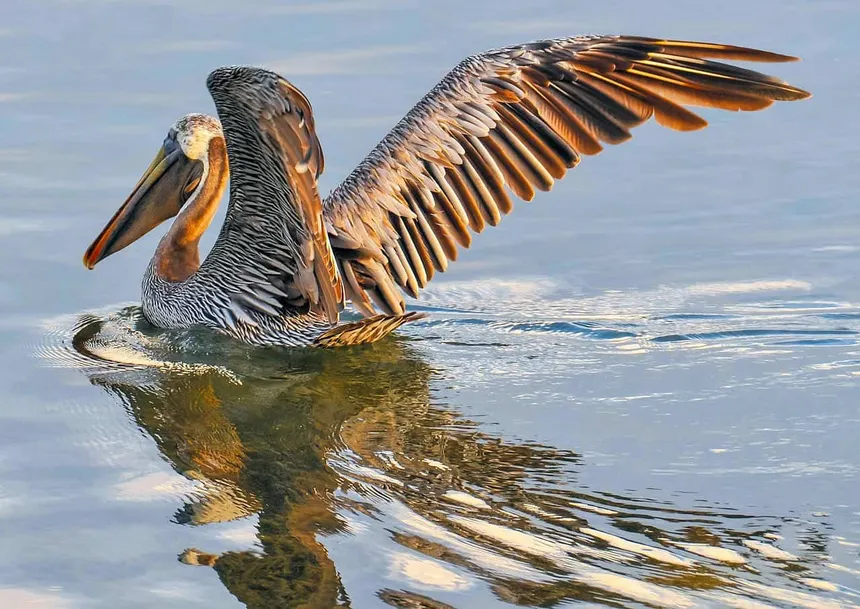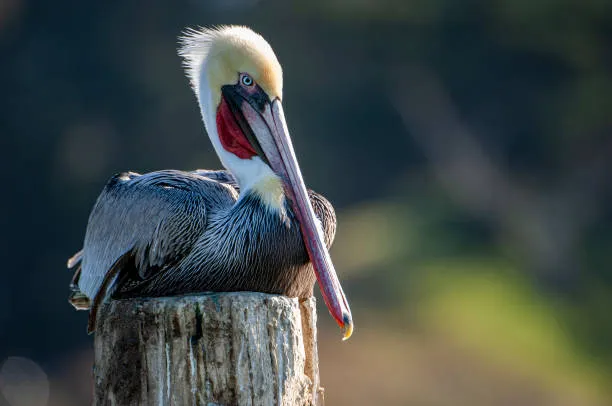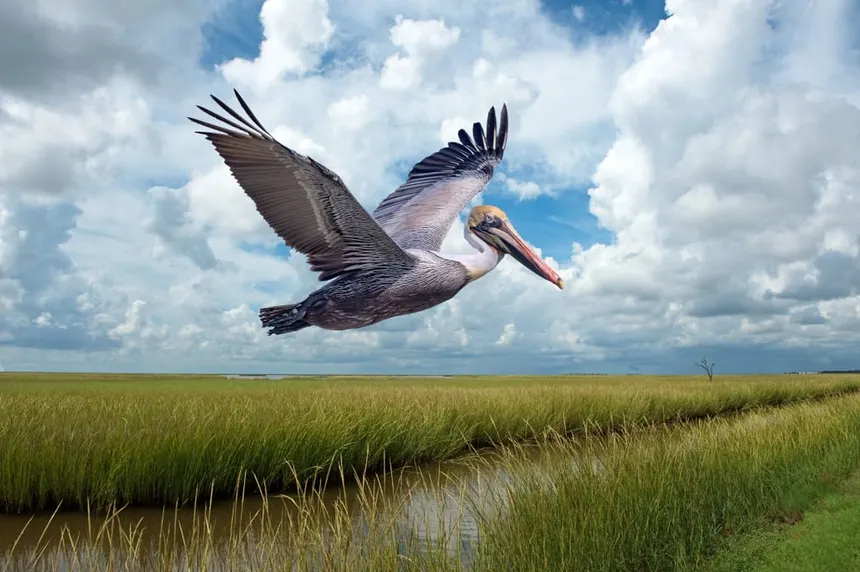Brown Pelican Wonders: Amazing Facts About This Coastal Icon

The Brown Pelican (Pelecanus occidentalis) is one of the most recognizable birds found along the coasts of the Americas. With its large bill, expansive wingspan, and graceful diving technique, the Brown Pelican captivates bird watchers, photographers, and beachgoers alike. It is the smallest of the pelican species, but it’s certainly not short on fascinating features. In this article, we’ll dive into the most interesting facts about the Brown Pelican—its unique feeding habits, ecological role, historical significance, and more.
1. The Only Diving Pelican
Unlike other pelican species that fish while floating, the Brown Pelican is the only one that dives headfirst into the water to catch fish. From heights of up to 60 feet (18 meters), it plunges dramatically into the sea, using its large bill and expandable throat pouch to scoop up fish. This spectacular hunting method is not only effective but also iconic to the species.
2. Lightweight, Despite Their Size
Brown Pelicans may appear heavy, but they’re relatively light for their size:
- Weight: 6 to 12 pounds (2.7 to 5.4 kg)
- Wingspan: Up to 7.5 feet (2.3 meters)
Their lightweight, air-filled bones and specialized air sacs under their skin cushion the impact during high-speed dives.
3. That Famous Pouch Isn’t For Storage
The Brown Pelican’s massive gular pouch can hold about 3 gallons (11 liters) of water, which is three times more than its stomach! But contrary to cartoons and myths, pelicans do not store food in their pouch. Instead, they use it to scoop up fish and water, then drain the water before swallowing their prey.
4. Coastal Lifestyle Experts
Brown Pelicans are strictly coastal birds, preferring warm shorelines, estuaries, bays, and harbors. They are found along the Atlantic, Gulf, and Pacific Coasts of the Americas, from the southern U.S. and California all the way down to northern South America.
🧭 Unlike most pelicans, they rarely venture inland, making them a true symbol of the sea.

5. Strong Fliers, Despite Clumsy Looks
They may waddle awkwardly on land, but Brown Pelicans are strong and graceful fliers. They often fly in V-shaped formations or single lines, gliding low over the water in perfect synchronization. This efficient flight pattern helps conserve energy during long coastal journeys.
6. Stunning Seasonal Plumage
While generally grayish-brown in appearance, adult Brown Pelicans develop bright breeding plumage:
- Head turns yellow or white
- Neck may become reddish-brown
- The pouch becomes more colorful with hints of blue and red
These color changes are temporary but make them look striking during the breeding season.
7. Nesting in Colonies
Brown Pelicans are colonial nesters, building their nests in large groups on isolated islands, mangroves, or even man-made structures. They often nest on the ground, in shrubs, or in low trees. Both parents incubate the eggs and care for the chicks.
- Clutch size: 2–3 eggs
- Incubation period: Around 30 days
- Chicks fledge: After 10–12 weeks
8. A Comeback Story: From Endangered to Recovered
Brown Pelicans faced serious decline in the mid-20th century due to DDT pesticide use, which caused eggshell thinning and reproductive failure. By the 1970s, they were on the endangered species list.
Thanks to the banning of DDT and dedicated conservation efforts, their populations rebounded dramatically. In 2009, the Brown Pelican was officially removed from the U.S. Endangered Species List—a major success story for wildlife conservation.
9. Long Lifespan
In the wild, Brown Pelicans can live 15 to 25 years, though many succumb earlier due to threats like fishing hooks, plastic pollution, or oil spills. In captivity, they’ve been known to live even longer.
10. Cultural Symbolism
The Brown Pelican holds a special place in various cultures:
- It is the state bird of Louisiana, symbolizing protection and parental care.
- Often seen as a symbol of self-sacrifice and resilience due to its nurturing behavior and recovery from near extinction.

Conclusion
From their dramatic dives and enormous wingspan to their triumphant conservation recovery, Brown Pelicans are one of nature’s most impressive coastal birds. They represent not just the beauty of marine ecosystems, but also the impact humans can have—both negative and positive—on wildlife. Whether gliding just above the waves or resting on a pier, the Brown Pelican is a true guardian of the shoreline, worth admiring and protecting for generations to come.



